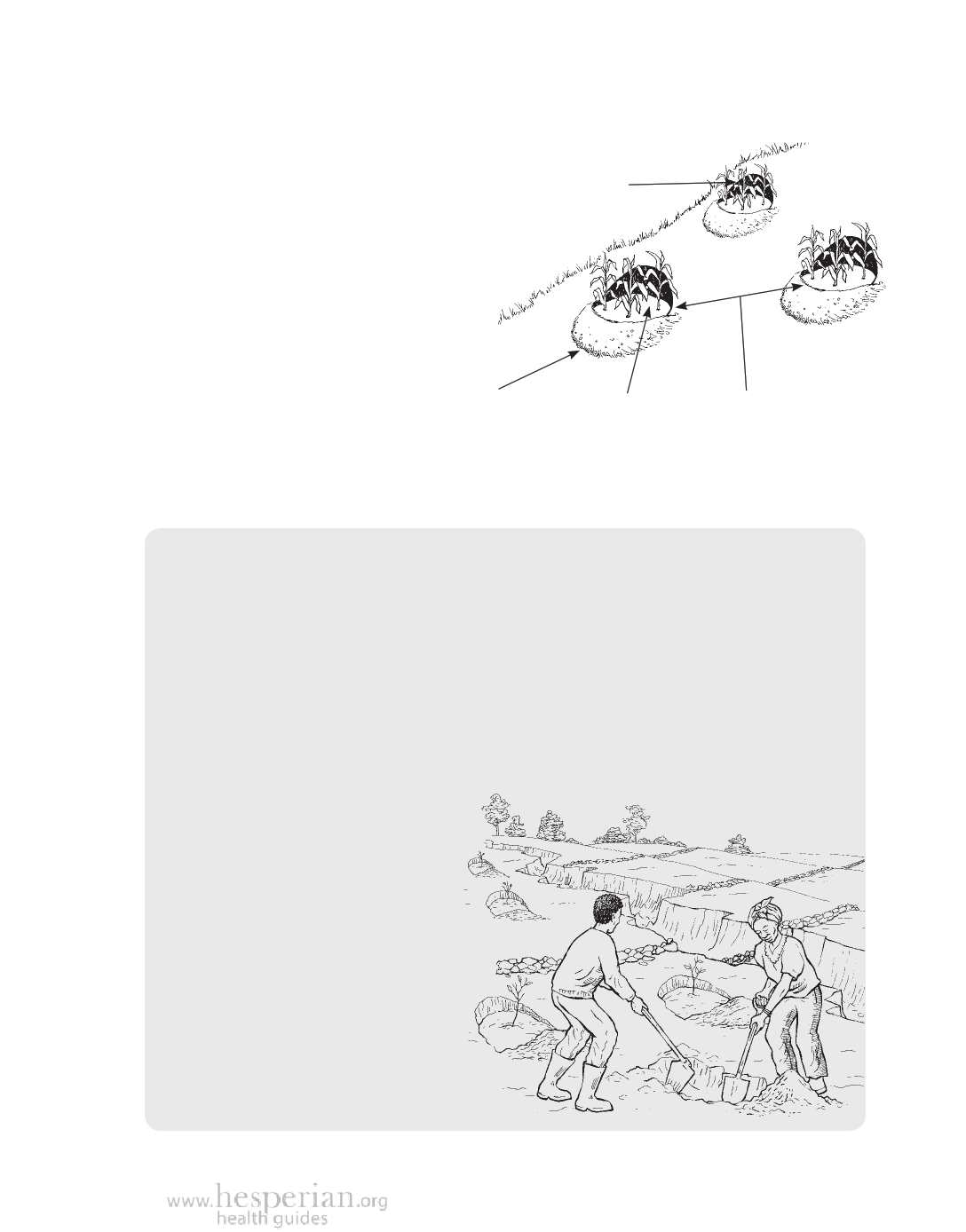
use water wisely 295
Make planting pits
Planting pits collect rainwater to
help plants grow even in very dry
conditions. Planting several crops
in the same pit makes the best use
of water. The crops that need
the most water grow best at the
downhill end. Crops that can live
with less water grow well on the
higher side of the slope.
In the second year, plant in the
same pits, or dig new pits between
the old ones. If you dig new pits,
over the years the whole area will
be fertilized.
Dig holes about
15 centimeters
deep during the
dry season.
Pile soil
from the pit
downhill,
to form a
small wall.
Add
manure or
compost to
each pit.
The distance
between pits
is 1½ times the
width of the pits.
Stone walls prevent erosion and save water
The central plateau of Burkina Faso is a mix of flat ground and gentle slopes.
Rainfall has always been low, but there has been even less in recent years,
and the land and people have suffered. To conserve water and prevent erosion,
farmers build low stone walls across fields. The walls slow down the flow of
water, allowing time for it to soak into the ground. The walls also prevent soil
from blowing or washing away and catch soil that erodes from higher slopes.
Farmers also dig large planting holes. They fill the holes with compost or
manure to fertilize the crops and hold water.
Where gullies have formed,
people fill them with stones. If a
gully is too big to fill, they build
a stone wall across it. Just as on
the field, the stone wall slows
water down and keeps the gully
from getting worse. Over time,
soil may fill the gully.
By using these methods,
farmers in Burkina Faso are
able to make the land richer and
improve crop yields even with
less rainfall. And with more food,
people’s health has improved.
A Community Guide to Environmental Health 2012